FERAL - The advance of destructive wild cats across New Zealand’s native heartland
Farah Hancock of RNZ
17 November 2025, 12:22 AM
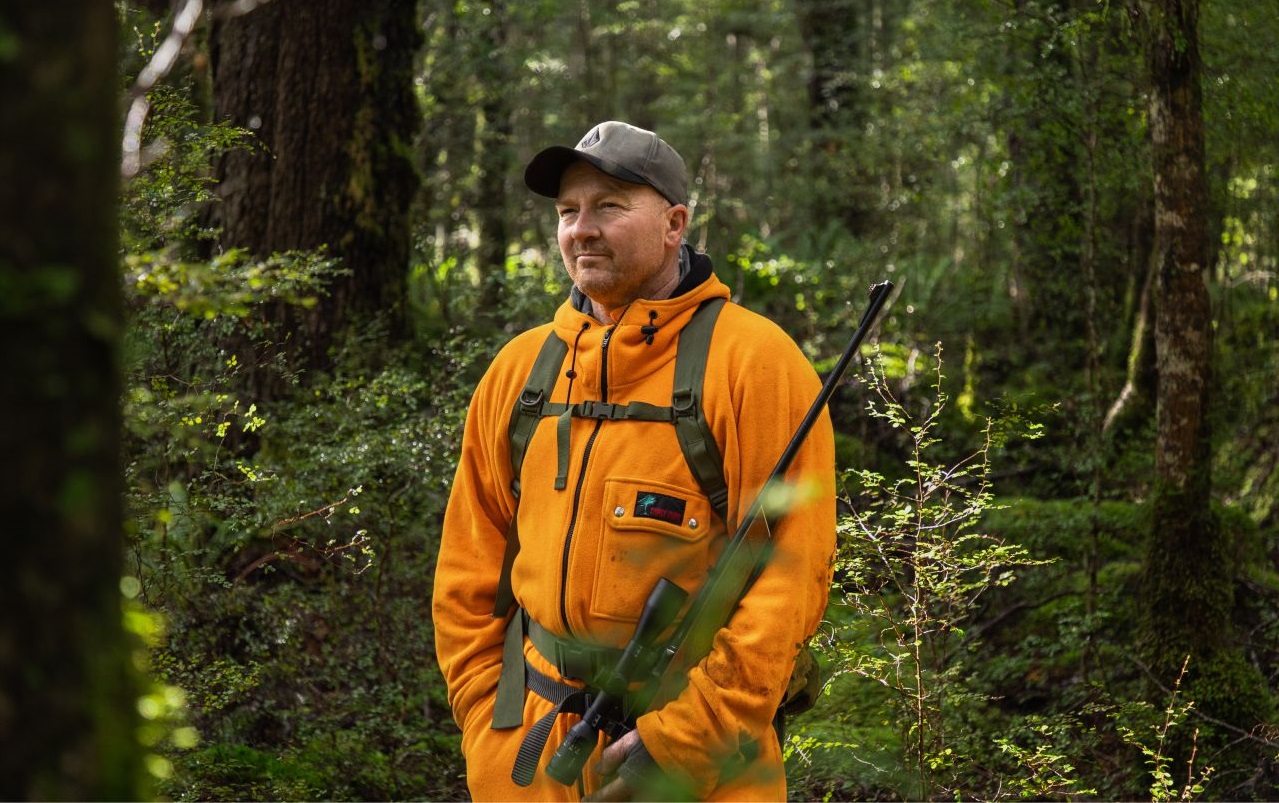 Victor Tindale is at his happiest when he’s surrounded by nature. When he kills something an apology and a gentle pat always follow, however when it comes to predators like feral cats, he sees dispatching them as a necessity. Photo: RNZ / Cole Eastham-Farrelly
Victor Tindale is at his happiest when he’s surrounded by nature. When he kills something an apology and a gentle pat always follow, however when it comes to predators like feral cats, he sees dispatching them as a necessity. Photo: RNZ / Cole Eastham-Farrelly Reporter: Farah Hancock of RNZ
Warning: This story includes written descriptions and pictures of the trapping and killing of feral cats and other pests and wild animals
“I’m sorry mate, it’s not your fault,” he says, swinging the piece of wood.
The swift blow sounds loud in the quiet Fiordland bush and the feral cat squirming in the net is suddenly still.
Two more heavy blows ensure the job is done.

Photo: RNZ / Cole Eastham-Farrelly
Victor Tindale is at his happiest when he’s surrounded by nature.
There’s dirt under the nails of the hand grasping the heavy length of mānuka and he’s clad in an orange hunting shirt with layers of well-worn merino underneath.
A belt bag full of essential items sits around his waist and a rifle is slung over his shoulder.
He’s a little bit feral himself, confessing he’s not sure when his last hot shower was, although he’s had plenty of cold water washes in Lake Manapouri under the gaze of snow-capped mountains.
He breaks into song on occasion and makes jokes even more frequently, his face creasing with laughter until his cheeks rise so high that his eyes narrow to arched slits and his eyebrows vanish under his cap.
Tindale is good at killing, but he takes no joy in unnecessary slaughter.
When he kills something an apology and a gentle pat always follow.
When it comes to predators like feral cats, he sees dispatching them as a necessity.
“We're in this beautiful place and this is just an utter killing machine,” he says before grabbing the length of mānuka.
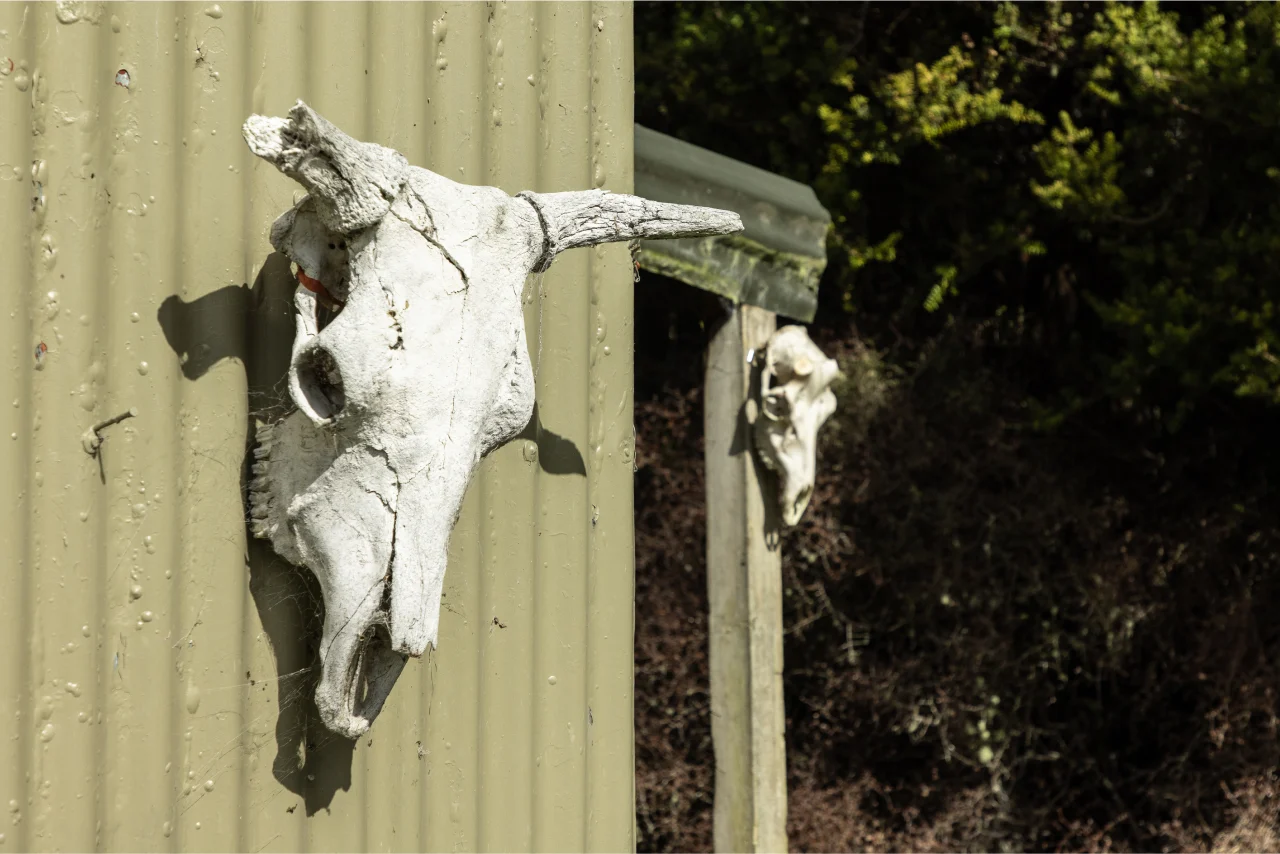
Photo: RNZ / Cole Eastham-Farrelly
“I hate to think what this cat has slayed to survive. He's just doing what he's got to do, but we've got to do what we've got to do as well.”
This is his second trip to the same area in the space of a few months and he’s here to prove the point that a jewel in the crown of Aotearoa’s national parks is thick with pests and the Department of Conservation (DOC) is missing an opportunity to make it easy for people like him to help.
Tindale’s one-man-mission started in April when he spotted cat droppings at DOC’s tiny Back Valley Hut close to Lake Manapouri.
It’s a humble hut nestled in the swampy edges of Fiordland and mostly frequented by hunters.
A cow skull adorns its exterior and inside there’s just four bunks, a small bench and an incongruous tattered office chair next to the fireplace.
He wasn’t expecting to see signs of cats in one of the country's most pristine places.
Fiordland is a tourist hotspot, attracting around 800,000 visitors a year keen to take in the waterfalls, moss-covered forests, mountains and wildlife.
Leghold traps are hanging in the wood shelter, so he sets one.
The next morning he finds a cat.
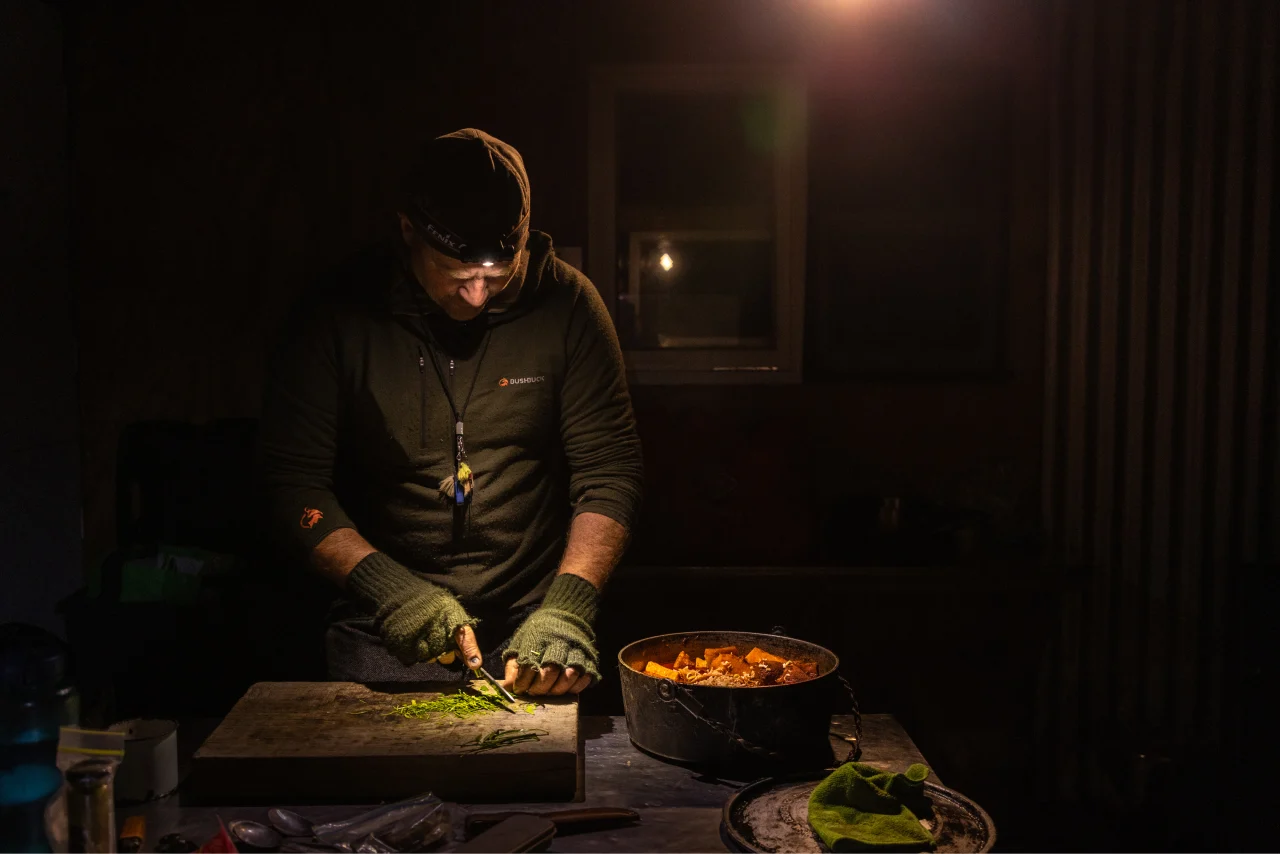
Photo: RNZ / Cole Eastham-Farrelly
“I was pretty stoked with myself,” he says.
He assumes he’s captured the cat responsible for the fecal calling card, but decides to set the trap again.
Later that afternoon he hears it clank shut. It is a sound he will become familiar with.
In two days he catches four cats.
Tindale is astounded. Fiordland is home to kiwi, tomtits, robins, bellbirds and weka.
Feral cats and their ferocious appetites have no place here.
He buries them in lumpy ground behind the hut; four mounds of dirt, neatly lined up with a shared wooden tombstone announcing the feral cat graveyard with four tally marks burnt in.
Tindale knows he’s being provocative, he describes his cemetery as a “little bit of a laugh”, but he hopes it will inspire other hunters visiting the hut to set traps.
He contacts DOC, sharing photographs of his graveyard, and saying he would like to return and trap more cats.
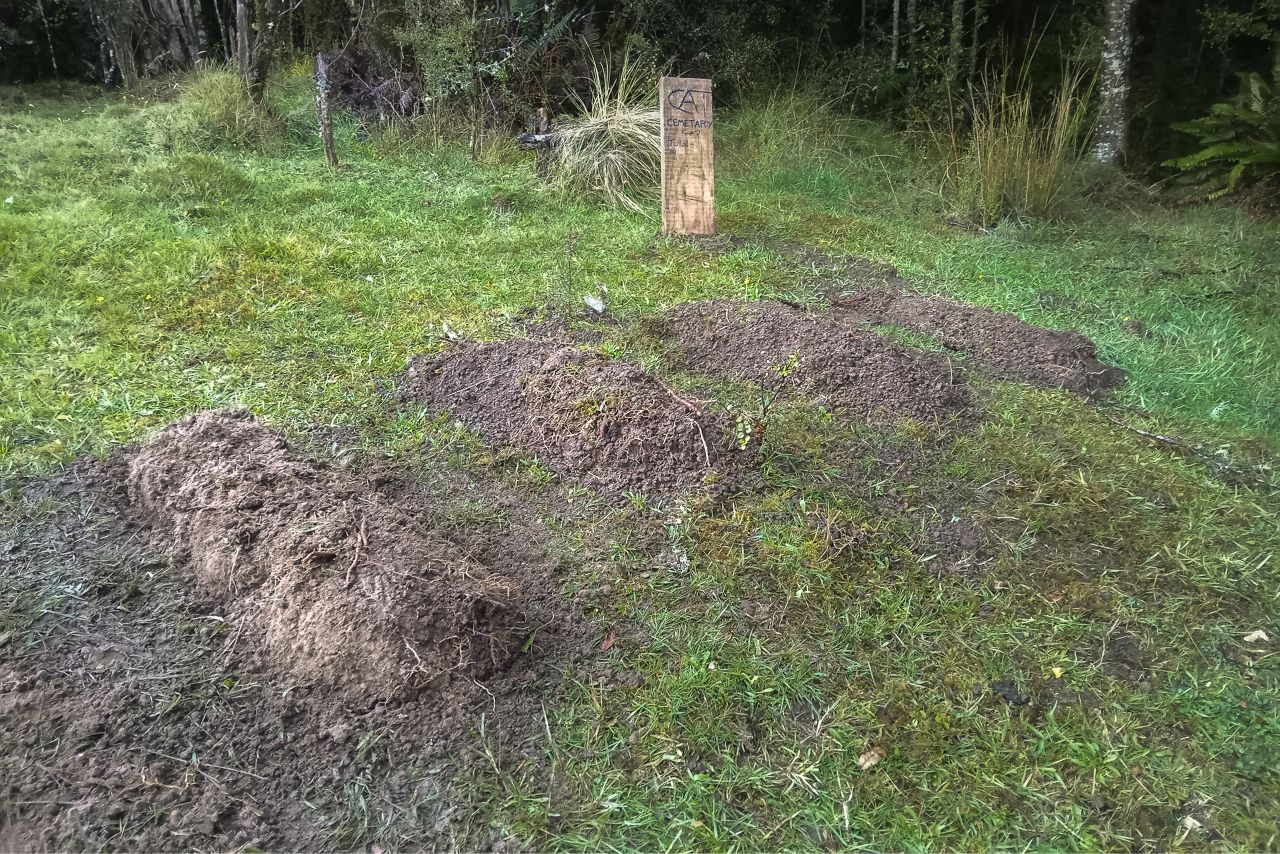
Photo: Victor Tindale
“I thought they'd have a chuckle, you know, and be pleased, but it was nothing of the sort.”
He is made to feel like a “naughty boy”.
The DOC staffer isn’t happy he buried the cats close to the hut where people might pitch a tent.
He’s told he should have left them on the ground where they were trapped and that the leghold traps, which are of a prohibited style, will be removed from the hut.
Tindale feels there’s scant enthusiasm about his desire to return and do more trapping.
“What was said to me was, ‘I don't mean to knock your efforts, but it's not an area that we do any pest control’.”
Once again, he’s astounded.
The area around Back Valley Hut is swampy, thick with sandflies and bordered by the dubiously named ‘Stinking Creek’ but it holds an undeniable charm.
Fantails flit around, huge native sedges tower like silent grassy sentinels over the swamp and harriers soar above the trees.
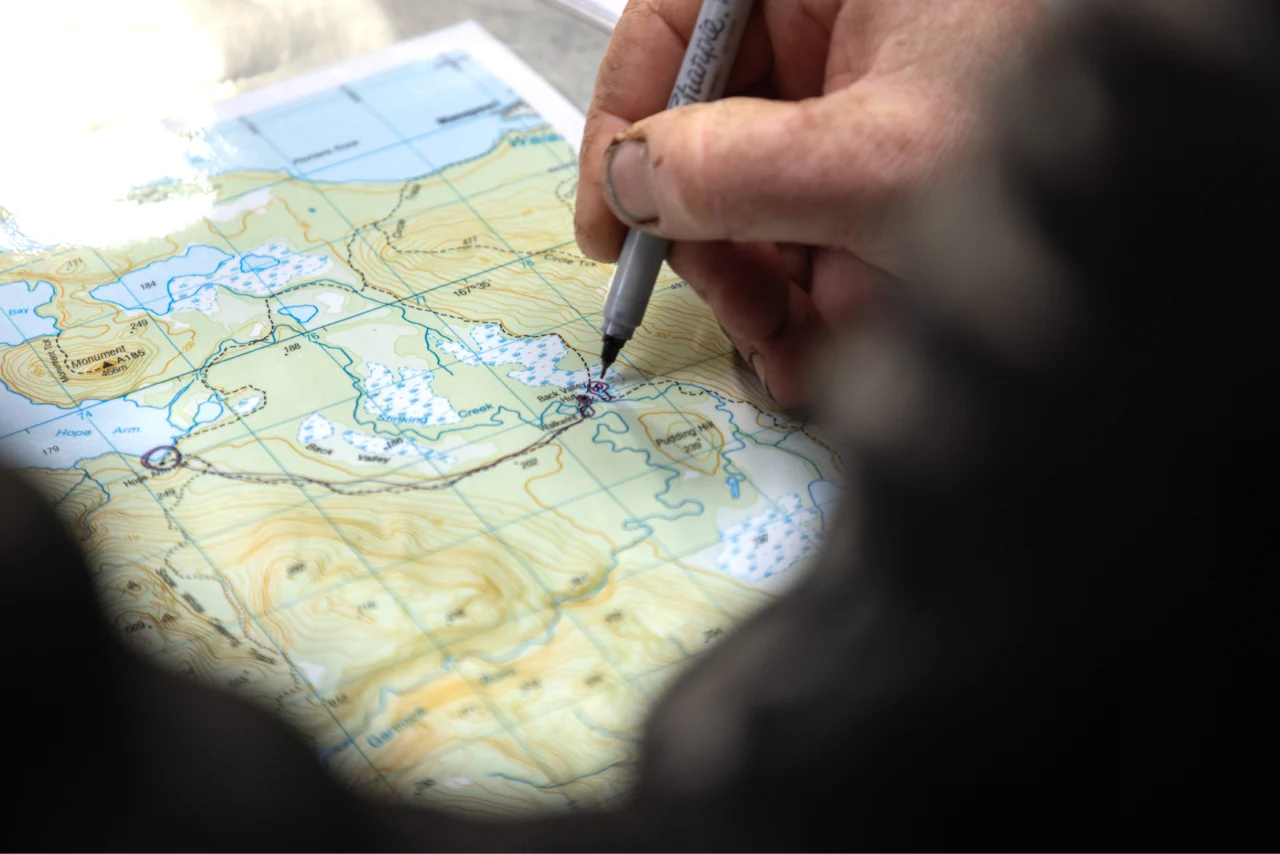
Photo: RNZ / Cole Eastham-Farrelly
Nearby, the picturesque Hope Arm Hut and campground, which lies on the kōwhai and flax ringed shoreline of Lake Manapouri, is a popular summer spot with holiday makers.
To Tindale, this area is a doorstep into Fiordland.
Protecting this border is important, otherwise the frontline for native species inches further and further back. The advance of cats into Fiordland’s wildest spaces fills him with unease.
Seeing the bush under pressure from pests, is like seeing a friend dying, he explains. Even things which appear to be thriving feel like future ghosts to him. “You want to help.”
DOC’s limited budgets are common knowledge and he’s aware it can't do everything, so his reaction is: “Okay, well, then I'll do it.”
He anticipates catching more cats on this second visit, but yet again he’s astounded.
“It's a bloodbath out there.”
Counting Our Cat Problem
Ask experts how many feral cats there are in New Zealand and invariably, there’s a sigh and a quip about how hard it is to herd cats for counting.
We’re one of the world's biggest domestic cat owners, with around 40 percent of homes owning at least one cat. Unwanted pets make their way into becoming what’s referred to as stray cats.
These are the cats which live close to humans often surviving on scraps.
Feral cats are the truly wild cats, generations removed from their domestic roots and having had no human interaction.
It’s these cats even the SPCA accepts should be killed due to the risk they pose to wildlife.
Jessi Morgan is the chief executive of the Predator Free New Zealand Trust, which aims to inspire New Zealanders about what a predator free country could look like.

Photo: RNZ / Cole Eastham-Farrelly
She says it’s anyone’s guess how many feral cats roam the country.
“I've seen estimates from two-and-a-half million to 14 million, which basically tells us we've got no idea what those numbers are,” she says.
Anecdotally she’s hearing hunters and farmers say they’re seeing more and that warmer winters mean females can have up to three litters a year.
What is known is how far they’ve spread, which she describes as “absolutely everywhere”, from sea level upward and even crossing the Southern Alps.
For native species, which evolved without mammals hunting them, cats are a disaster. Many native birds either nest on the ground, or spend time on the ground and are defenceless.
The book Extinct birds of New Zealand identifies cats as certainly contributing to the extinction of 14 native bird species, and possibly contributing to an additional 10.
It’s not just birds they target. A feral cat in Ohakune was documented killing 107 bats in one week, and another in Canterbury was found with 17 skinks in its stomach.
Feral cats are estimated to kill 10 to 20 creatures a day from birds to lizards, frogs, bats and even wētā.
“Even a well-fed cat will still hunt for fun,” Morgan says.
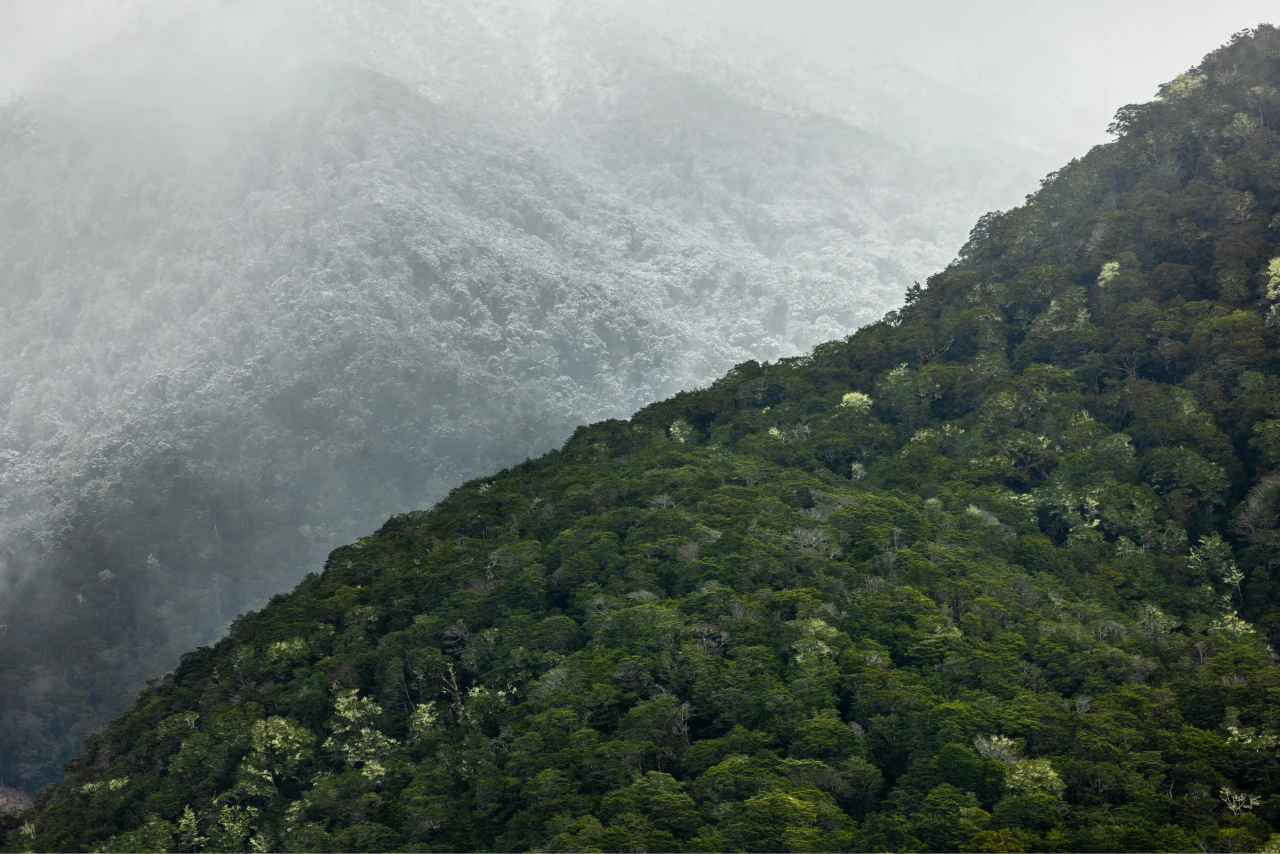
Photo: RNZ / Cole Eastham-Farrelly
The trust has been campaigning for feral cats to be included in the Predator Free 2050 list, which currently consists of rats, possums and stoats.
To her, it makes no sense removing the other predators while leaving feral cats.
The origins of species included in Predator Free 2050’s hit list was a ‘pest summit’ workshop convened by DOC in 2012. Cats were initially part of the list, but were later removed, due to a lack of social support.
Morgan says the tide has turned and there’s now social licence to include cats.
The Predator Free 2050 strategy is up for review, and earlier this year DOC sought public submissions.
“I think DOC has been overwhelmed by the number of submissions supporting the addition of feral cats to the list of target species.”
An upcoming report looking to refresh the predator free strategy is due to be considered by the government about now.
Meanwhile, cats are in a limbo land, with control measures not falling into any national strategy.
Calls for action have come from both conservationists who fear for native species and from farmers due to the risk toxoplasmosis poses to livestock.
Even moves to tighten controls on domestic cats stalled after the government chose not to follow the recommendation of the environment committee to require cats be registered and desexed, saying there was “no scope” to advance the work.

A feral cat and some of the remains of 107 dead short-tailed bats. The bats were found at the base of a bat roost tree and stashed around in piles during the time the cat was active. Photo: DOC
The inclusion of feral cats on the predator free list would lead to more research to understand ways to control their numbers, says Morgan.
This is important because eradication is a challenge. Poisoning campaigns for carnivores rely on meat-based baits.
These spoil quickly and come with a delivery conundrum if you want to target large areas.
Anything dropped from a helicopter needs to stay intact when it hits the ground, and there’s been talk of exploding sausages.
Trapping, or hand-set poisoned baits is the other approach, but is labour intensive and comes with its own obstacles.
“They are quite sneaky. They can be really hard to trap or poison because they are cautious,” says Morgan.
Red Tape and the Return To Back Valley Hut
Tindale’s keen to return to Fiordland and is brimming with cunning ideas for how to trap the notoriously wary felines.
“I couldn't come back here to just go hunting without doing something to help,” he says.
“Otherwise it’s a take-take-take equation without giving back.”
What he’s not planning for are the hoops he needs to jump through to get DOC’s blessing to voluntarily trap in a national park.
Obtaining a hunting permit, which allows the use of a high-powered rifle on conservation land, takes a few taps of a keyboard.
Moments later a 12-month permit arrives by email.

Feral cat eating kākāriki on Maukahuka/Auckland Island. Photo: Finlay Cox/DOC
“On the other hand, for that same person to get a permit to carry a couple of traps to help better the environment, there’s really nothing set up.”
There are trapping permits for community groups but the only option Tindale has as an individual wanting to trap feral cats is to apply for a commercial possum fur trapping permit, even though he has no desire to trap possums for fur.
Tindale sends his detailed application to the local DOC office in June, but it takes a reminder email late August, just a week before his trip, to get approval.
The application includes maps of where he will be trapping and the types of traps he will use.
He includes an explanation of how he will humanely dispatch cats caught in live capture traps.
Small calibre .22 guns aren’t permitted on conservation land, and using his deer hunting rifle would be unsafe and excessive.
The use of a club and blunt force is approved by a DOC staffer.
He arrives in Fiordland at the beginning of September as a dry winter turns into a soggy spring, armed with an array of approved traps he’s bought himself, some which kill instantly and others which trap cats alive.

Photo: RNZ / Cole Eastham-Farrelly
In the five months since his last visit the mounds in the cat graveyard have subsided and someone has pulled his tombstone down, throwing it in the woodpile. The two prohibited leghold traps remain dangling in plain view.
Topping his to-do list is hunting deer for his own meals and for its trap-disguising pelts.
Next is trapping possums, whose fat is rancid-smelling stuff, with an odour which clings to your skin for hours.
He hopes this smell around the traps will be the scent equivalent of a kitty-cat dinner bell.
He selects perfect spots for the cat traps, trees growing on a slant are ideal, they raise the trap above where kiwi or weka can reach while providing a convenient ramp for cats to slink to the banquet he's prepared.
He disembowels the possums, nailing the carcass to the tree above the trap and leaving the guts on the ground underneath.
Traps are baited with the organs, which he describes as delicacies.
Bloodied fingers are wiped clean on moss carpeting the forest floor.
The trap itself is camouflaged with pelts, grass or moss.

Photo: RNZ / Cole Eastham-Farrelly
“I want the cat to think it’s eating an animal from the inside out,” he says of the hide-covered traps.
A “feeding station” in the middle of a clearing is created.
Deer carcasses and possums are pegged to the ground.
It’s a grotesque banquet which he hopes the cats will become accustomed to safely snacking on.
Once he’s lulled them into complacency he plans to add kill traps to the area.
A thermal camera is set up to document dinner guests.
There are cat droppings, so he knows at least one cat is in the area but his first few nights are spent listening to rain dripping through the beech tree leaves, frogs chirping and possum traps slamming shut.
Eighteen adult possums are caught, including one trapped snacking on the organs of another.
He’s surprised at the cannibalistic turn of the omnivorous marsupials.

Photo: RNZ / Cole Eastham-Farrelly
Another kill trap catches a stoat, an apex predator he’s pleased to remove from Fiordland.
He suspects the stoat is responsible for a grisly scene where a freshly trapped possum has its joey eaten and its inside thigh munched from within the comfort of the possum’s pouch.
It strikes Tindale that on a chilly night the pouch is a warm place for the stoat to feast from, like settling down to a hearty pub meal in front of a roaring fire.
At first, cats are elusive. He traps one cat, but he’s certain there’s more.
He worries the spring rain is diluting the scent signals. Then, the rains clear and the cats come out.
The next cat is caught in the cage trap draped in deer skin, with its metal floor covered with leaf litter.
Thermal camera footage shows the cat cautiously circling the trap for half an hour.
She’s intrigued but wary, repeatedly edging in and then skittishly darting off, before finally entering the cage and leaping in shock as the door slams shut behind her.
Another kill trap is catless, but its possum-lure has been attacked with surgical precision.

Photo: RNZ / Cole Eastham-Farrelly
It is one of the few possums Tindale left whole.
But something has disembowelled it, discarding the guts neatly on the ground, before making its way up internally to eat the kidneys, liver and heart. He’s perplexed at what would do this rather than just eat the flesh.
It’s a different story in the next kill trap.
“We’ve got a stonker.”
The tabby cat suspended part way up the tree stretches nearly a metre from the tip of its nose to the end of its tail. It’s fat, shiny and huge.
Tindale holds it up for a photo.
He’s accustomed to carrying heavy deer out of rugged bush, but holding the dead cat by its tail causes his arm to shake.
He’s incredulous at its size.
“Holy moly, a kiwi hasn't got a chance against that.
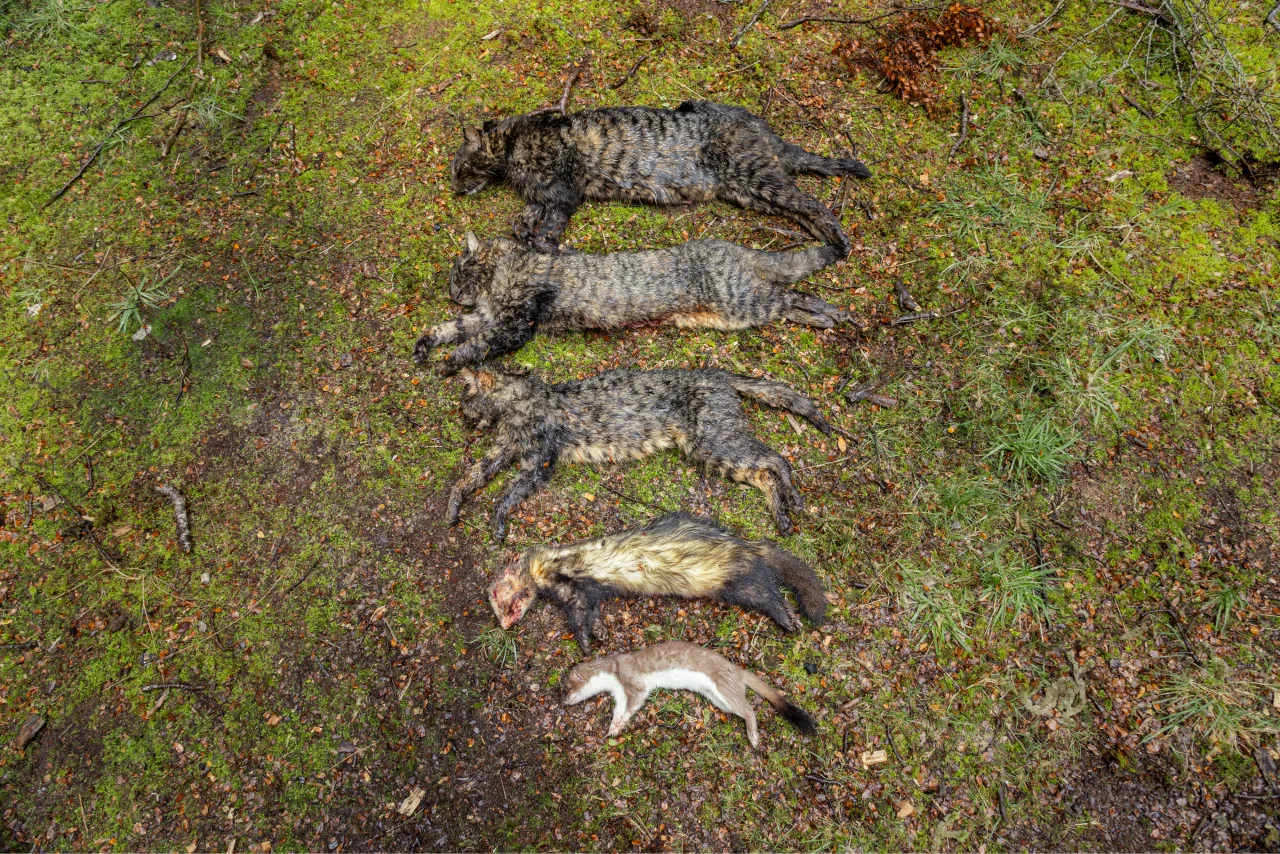
Cats, a ferret and a stoat caught close to Back Valley and Hope Arm huts. Photo: Photo: RNZ / Cole Eastham-Farrelly
Not a show. No wonder I've never heard of kiwi here in the years I've come here hunting.”
It’s the biggest of the cats Tindale traps.
He later catches another tabby in the same kill trap, and then finally a large grey tom near the feedstation, which by this time has been turned into a muddy pile of bones and tattered flesh thanks to the pigs, possums and cats who dined there.
His most surprising catch isn’t a cat. A ferret with luxurious fur solves Tindale’s confusion about the surgical disembowelling of the possum.
This ferret rounds out the cornucopia of predators he’s removed from Fiordland.
He’s later told by conservationists that it’s a significant find; it’s not something which is caught frequently there.
In just a few days he’s killed 18 possums, five cats, two stoats and a ferret.
“It's been shocking to me, the brutality of the carnivores in what was once a sweet, innocent, basically flightless-bird New Zealand. It's just brutal.
Stoats burrowing into possums, ferrets burrowing into possums, cats,” he says, describing what he’s seen in Fiordland National Park as carnage and a bloodbath.
An Army Of Trappers
The mission isn’t over for Tindale.
“I can't save the place all alone, or all the national parks, but there's a lot of people going out hunting, and as we've shown here, with just a few traps you can really make a difference.”
Tindale wants DOC to make the permit process for individuals wanting to trap simpler.
He wants a prompt to be added to the online hunting permit application asking people if they would like to do some trapping.
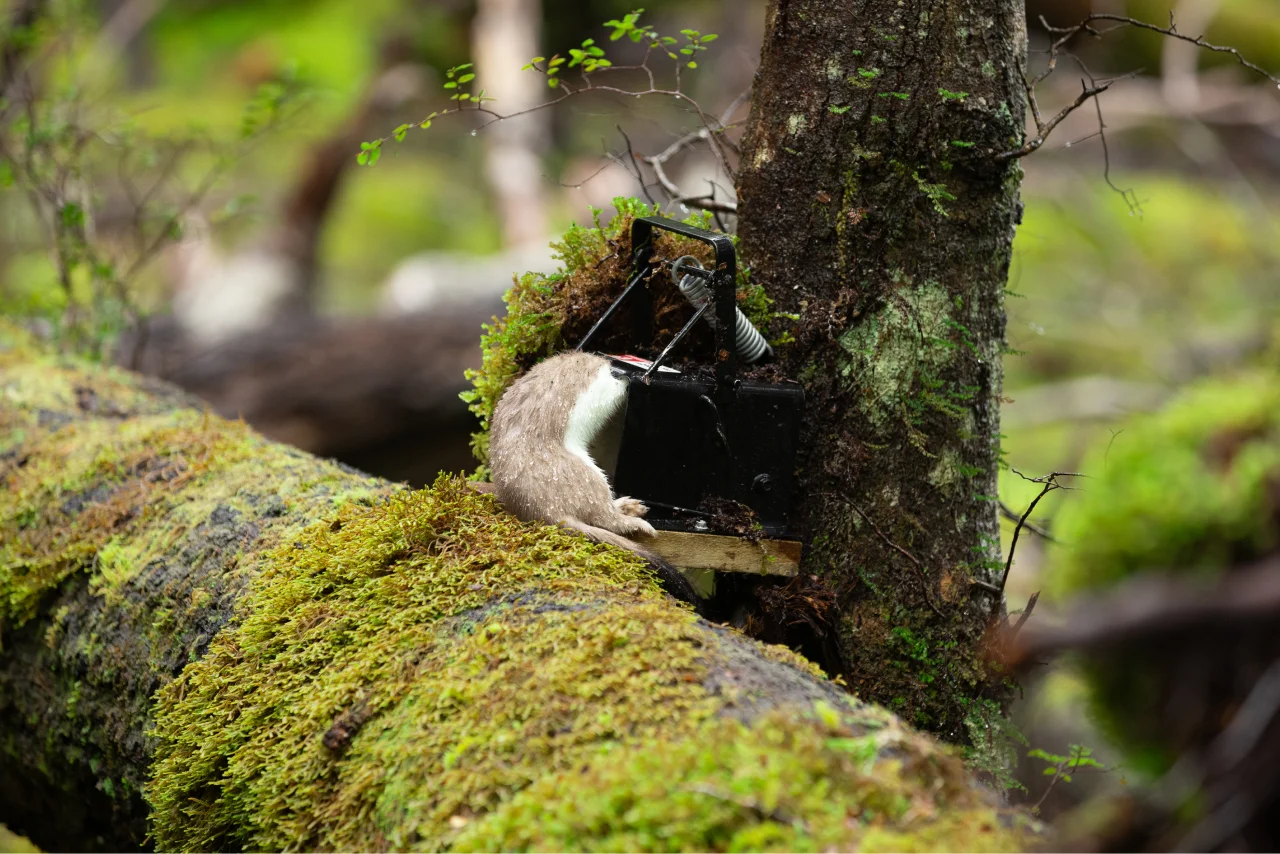
Photo: RNZ / Cole Eastham-Farrelly
“I've just set a couple of traps by a hut. Imagine thousands.
There are tens of thousands of hunters,” he says.
In his mind, doing something positive in our conservation estate shouldn’t be so hard and individuals wanting to trap predators shouldn’t have to apply for a commercial possum fur trapping licence.
The worry about bycatch is overplayed, he thinks.
Hunters used to dealing with lethal weapons should be able to be trusted with following simple instructions for setting traps high enough to avoid bycatch.
He’s written to the Minister of Conservation Tama Potaka and his suggestion has been passed on to DOC.
Tindale is yet to hear back.
DOC’s Te Anau operations manager John Lucas says a technical glitch meant a delay in receiving the letter.
He says the organisation encourages trapping.
Plenty of community groups help out already and there are other individuals like Tindale, who have adapted the possum permit.
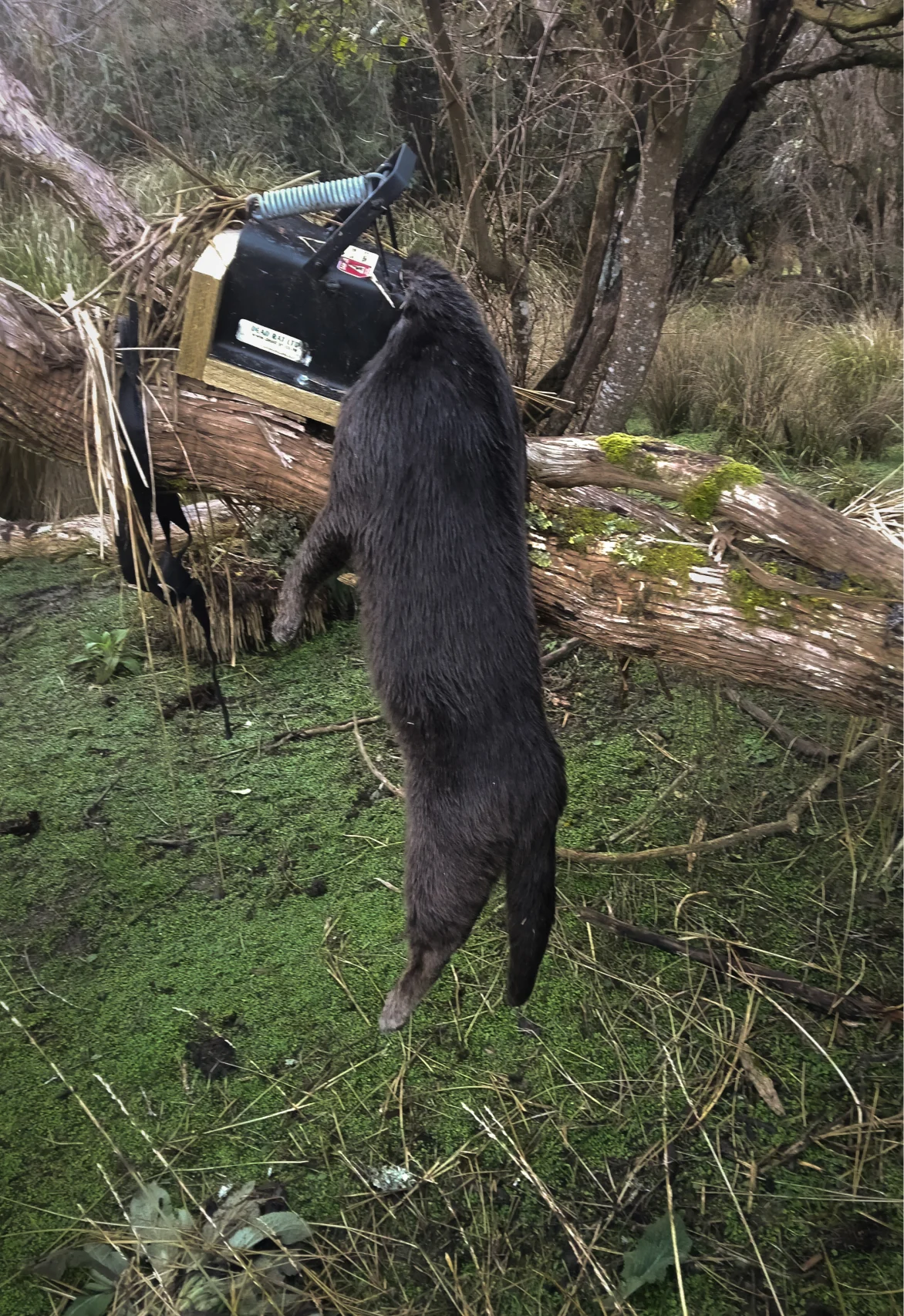
SA2 traps were set on trees or logs so they were out of the reach of kiwi and weka. This was the last of the cats caught on the trip and was smaller than the large tom. Photo: Victor Tindale
“Trapping requires a permit to ensure people only use traps that are approved as humane under the animal welfare act, coupled with setting conditions to reduce by catch of native species such as kiwi.”
He says the leghold traps left hanging in the woodshed at Back Valley hut aren’t for use.
“The traps located at the hut are of a historic value and the possum trapping past many of these huts served.”
The organisation works to control feral cats in some areas of Fiordland National Park, with trapping done in Eglinton and Clinton valleys.
Control work is done in areas where the highest priority of protection is needed.
However, given the park is New Zealand’s largest, he says there is always more work to do.
Tindale is already planning on returning to the same corner of Fiordland to take another crack at the cats, stoats and ferrets.
This time, he hopes he won’t need to do it with a possum fur trapping permit.
There’s a saying he uses when talking about his idea of making it easier for individuals to trap: “A little and often means a lot in the end.”
He knows his idea won’t eradicate feral cats completely but each cat removed is another hungry predator gone.
“I feel really good about removing those critters, but they are going to get replaced. More will move in.”
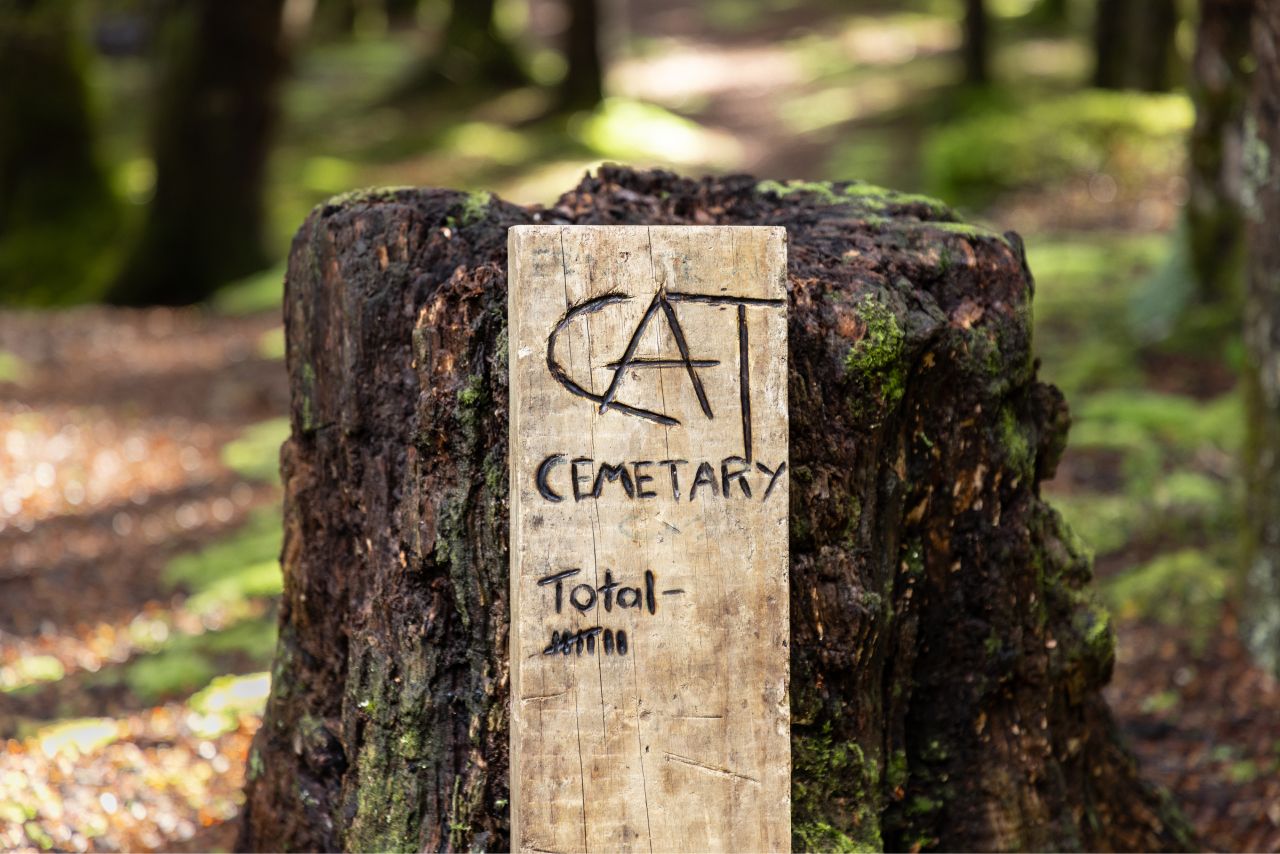
Photo: RNZ / Cole Eastham-Farrelly
Published by permission